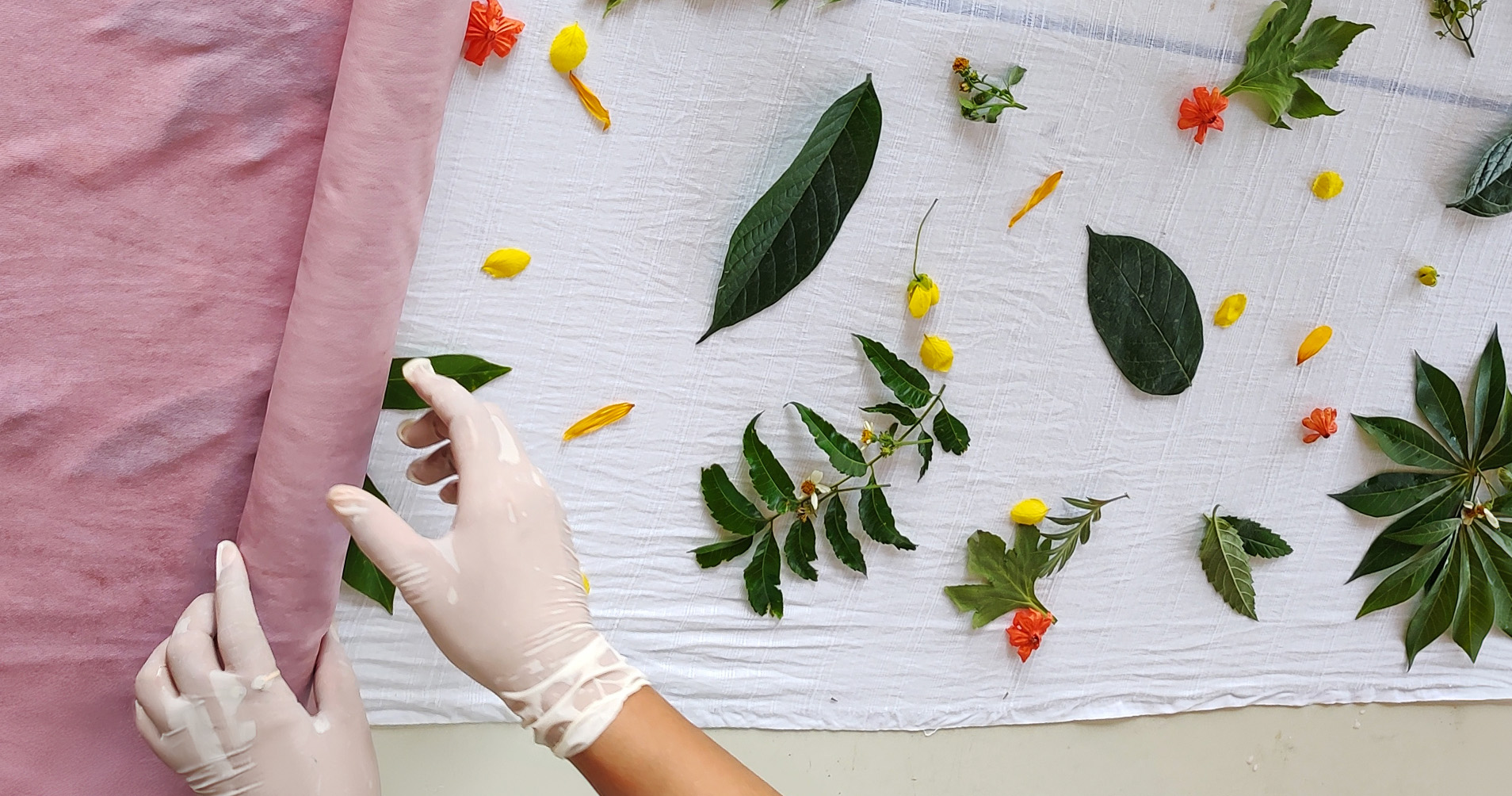Hyundai Motorstudio Senayan Park
Hyundai Motorstudio Senayan Park
Newsroom
The official news from Hyundai Motorstudio Senayan Park and a collection of innovative articles on mobility and sustainability here.
-
3 Eco-Printing Techniques Harnessing the Potential of Nature
- Hyundai Motorstudio Senayan Park Senayan Park 2024.04.29
-
Rising environmental awareness among the public influences decisions to choose more sustainable and environmentally friendly products. In textile art, the eco-printing technique has become an attractive and aesthetically pleasing alternative. This simple technique, which utilizes the richness of nature, existed well before modern fabric printing technology and remains the choice of many artisans to this day.
Eco-Printing Definition
Eco print comes from the English words, eco (ecosystem) which means 'nature', and print which means 'to print'. Eco-printing is a technique of printing patterns on fabric using natural materials such as leaves, flowers, and plant stems. This technique does not require synthetic ink or dyes, making it environmentally friendly and safe for health.
Eco-Printing Techniques
In general, three eco-printing techniques can be practiced: pounding, steaming, and leaf fermentation. These three techniques have different tools, materials, and methods of making them. Here is a more complete explanation.
1. Pounding Technique
Pounding is the simplest technique for creating patterns on fabric because it only uses a hammer or blunt object to repeatedly hit leaves or flowers on the fabric. This process aims to extract the color pigment from the leaves or flowers and transfer it to the fabric.
To use the pounding technique, prepare fabric, paper, hammer, alum, and pigmented plant parts. Spread the paper and fabric on top, place the plants on the fabric, and arrange the motif. Cover with another cloth and hit the plant parts with a hammer to bring out the color. Let stand for 15 minutes, open the cloth, clean the plants, and let stand for 2-3 days. Rinse the cloth with alum water without wringing and dry. Once dry, soak the cloth in alum water for an hour to prevent fading. Eco print product is ready to use.
2. Steaming Technique
This technique is quite complicated because it requires a lot of materials and steps. This technique uses hot steam to bring out the color and pattern of leaves on the fabric.
To use the steaming technique, prepare white cloth, pigmented leaves or flowers, wood or pipe, plastic, rope, pot or steamer, stove, alum, vinegar, bucket, and water. Wash the fabric and leaves, soak the fabric in alum water for 5 hours, and soak the leaves in vinegar water. Then dry the fabric and leaves.
After the fabric and leaves are dry, wet the fabric again, spread the plastic, and place the fabric on top. Arrange the leaves on top of the fabric, cover with plastic, press with wood or pipe, roll the fabric, tie with rope, and steam for 2 hours. Open the fabric, clean the leaves, air-dry, and let stand for 3 days. Soak the fabric in alum water for 15 minutes, wash with clean water, and dry until dry. Once dry, the fabric can be used immediately.
3. Fermentation Technique
This technique utilizes the natural fermentation process to produce patterns on fabric. Leaves and fabric are soaked in a mixture of water and fermentation ingredients such as sugar or vinegar for several days.
To practice this technique, collect leaves, flowers, or other plant parts that contain natural coloring pigments, then soak them in vinegar water to extract the color. Arrange the leaves or flowers on the fabric that has been spread out on a flat surface. Cover the fabric with plastic and hit it with a hammer or other object to bring out the color from the leaves.
Eco-Printing Product Examples
The eco-printing technique can be applied to various types of fabrics, such as cotton, linen, and silk. The results are also diverse, ranging from abstract, and floral, to geometric motifs. Products that can be made include:
- Scarf
- Clothes
- Bag
- Shoes
- Home Decor
Eco-printing is a creative and environmentally friendly textile art technique. This technique offers a beautiful and sustainable alternative in the world of fashion and decoration. Let's create beautiful and environmentally friendly works of art with eco-printing yourself at home!




